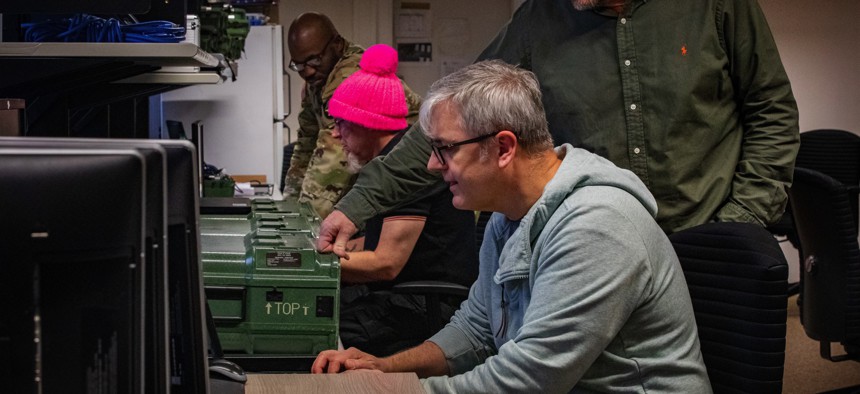LAUREN C. WILLIAMS

PHILADELPHIA — The Army wants to make upgrading software as easy as it is with an iPhone, so it’s testing out some changes to make that a reality, said Young Bang, the Army’s principal deputy acquisition chief.
One key change is doing away with the practice of “sustainment,” under which software is fielded and fixed by different Army offices.
“We are not transitioning software to sustainment. Period,” Bang said during the Army’s semi-annual Technical Exchange conference on Thursday. “The plan is to actually enable that in the beginning of the new fiscal year.”
Up until now, the Army has generally fielded new software through various program executive offices, then handed off the products to Army Materiel Command, which handles any needed patches or upgrades. This is inefficient, Bang said.
“There’s a lot of processes; there’s a lot of policies,” he said.
Now the service aims to mimic a commercial developer whose software team writes an app, works to improve it, and releases periodic updates.
“The commercial side, they don't have another organization [doing] the sustainment or the [operations and maintenance] and the enhancements. So that's the same model we want to take,” Bang said.
The Army has picked four programs to test out this new model: Enterprise Business Systems-Convergence, Nett Warrior, Army Intelligence Data Platform, and Cyber Situational Understanding. Each highlights at least one piece of the software-development lifecycle: requirements, software development, cybersecurity, contracting, and testing, he said.
The Army is also working on six pilots that will make it easier to upgrade software on a device: Firestorm PlUgin, Cyber Situational Understanding, Army Intelligence Data Platform, Mounted Mission Command—Software, Command Post Computing Environment, and Army Integrated Air and Missile Defense.
“You get your phone, a new phone probably every two years…and tying software to that process really delays everything because we have to have a material release process before software can actually be deployed,” Bang said. “You actually get updates on your iPhone pretty regularly. If we tie that to a six-month, [one]-year or two-year cycle of hardware, then that becomes an obstacle for us.”
The six pilot programs will test the policy to make sure it works before it’s fully implemented. All pilots and pathfinders will continue through the rest of the fiscal year with the goal of having a “a foundational” process in place by Oct. 1.
No comments:
Post a Comment